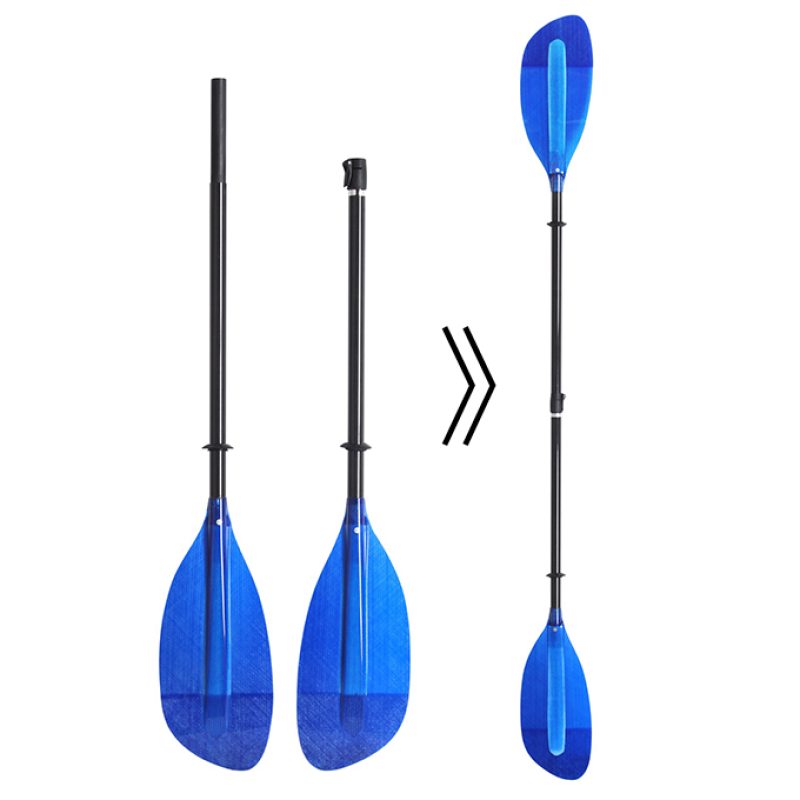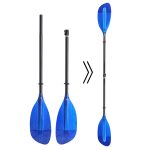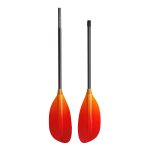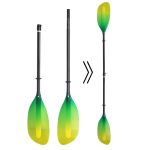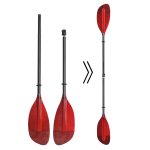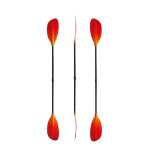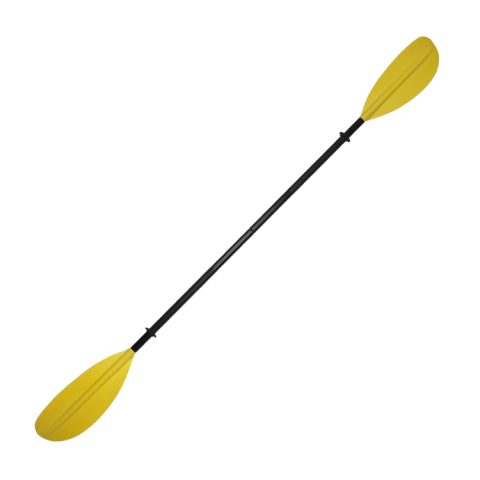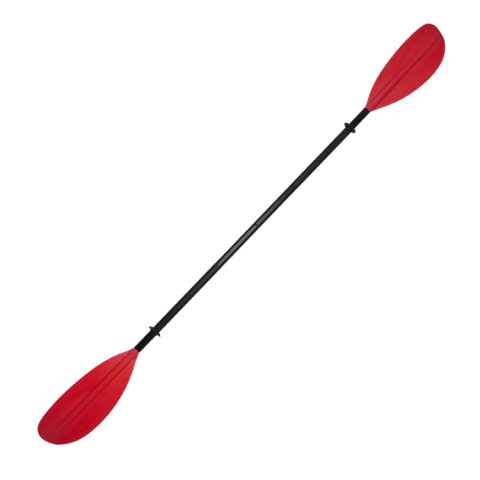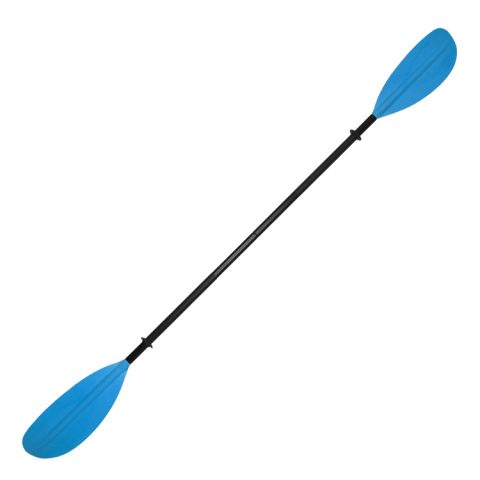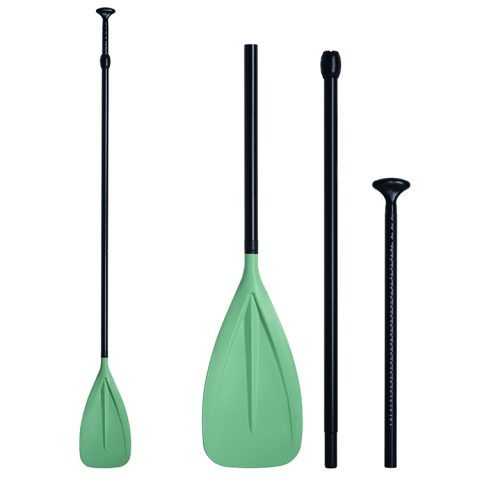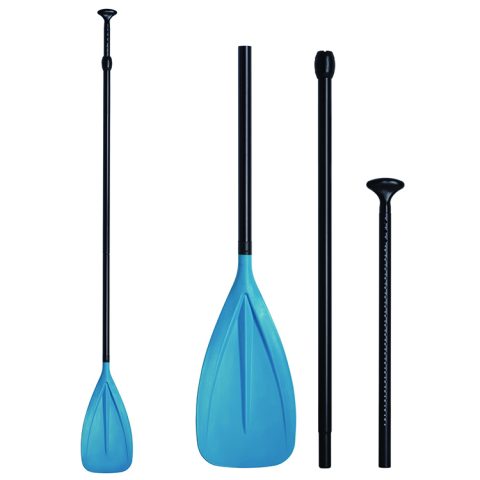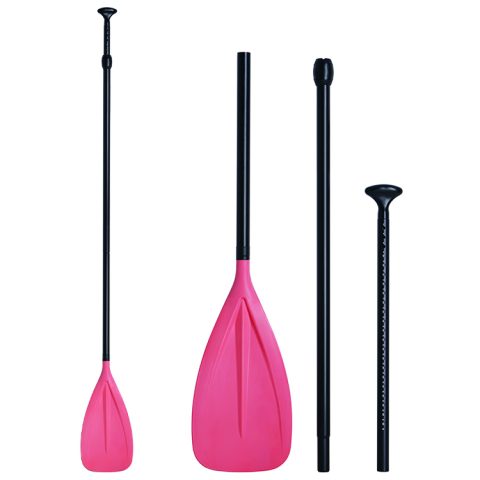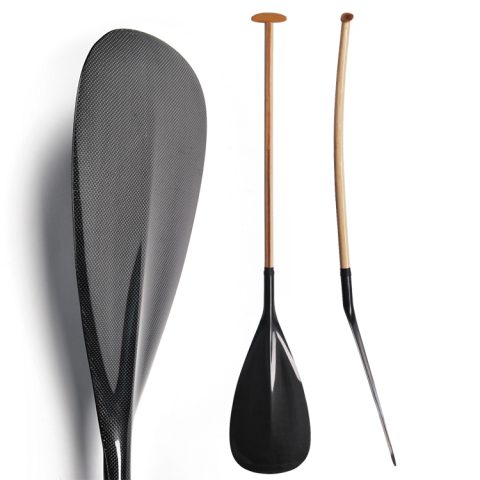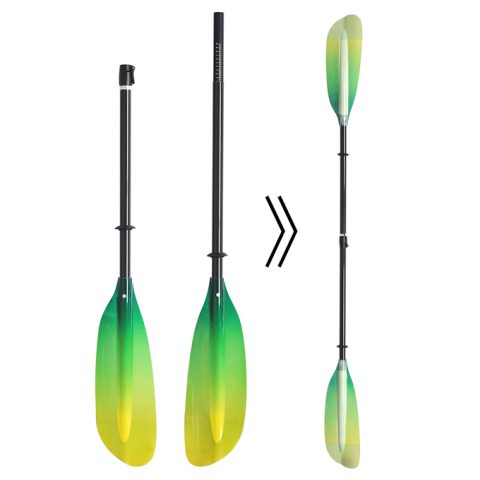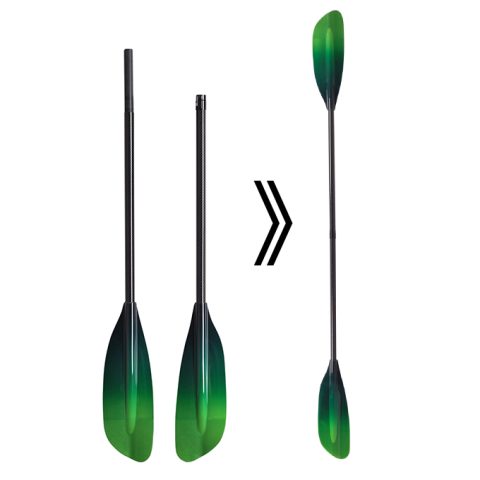2 pieces Detachable kayak paddle carbon fiber shaft – Adjustable Detachable kayak oar For Sale – Oar Manufacturer From China – Wholesale Price
Detachable kayak oar Specifications
Item Number: TJ-KP005-BU
Shaft Option :Straight
Shaft Material: carbon fiber
Blade Material: fiberglass
Color: Customized
Weight : 761 g
Length: 205cm to 260cm ,210cm to 240cm or customized length
Blade Length x Width: 52cm x 16.5cm
Blade Surface Area: 650 cm2
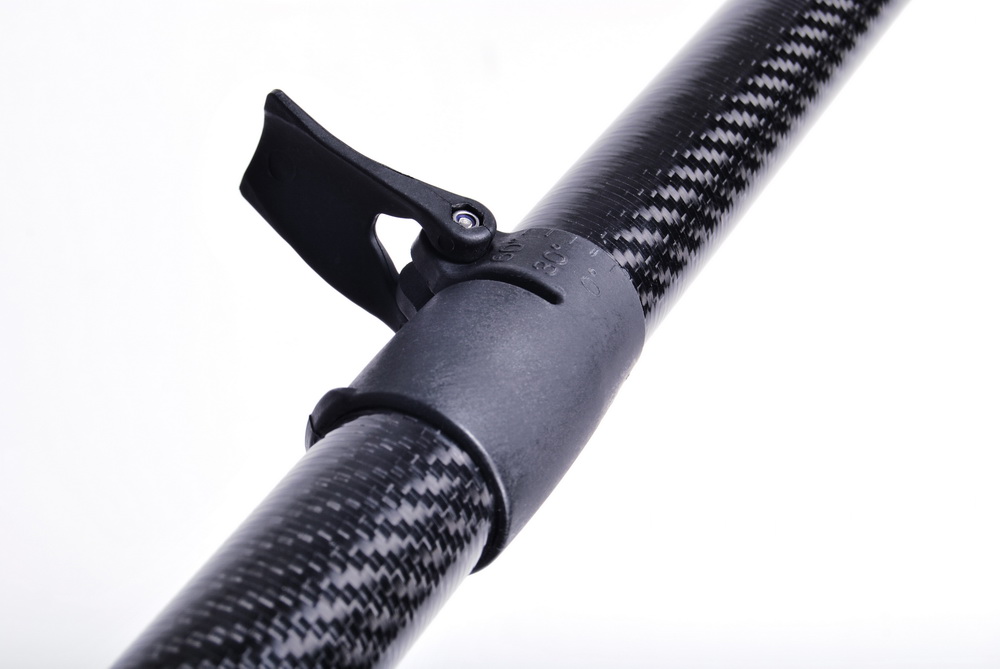
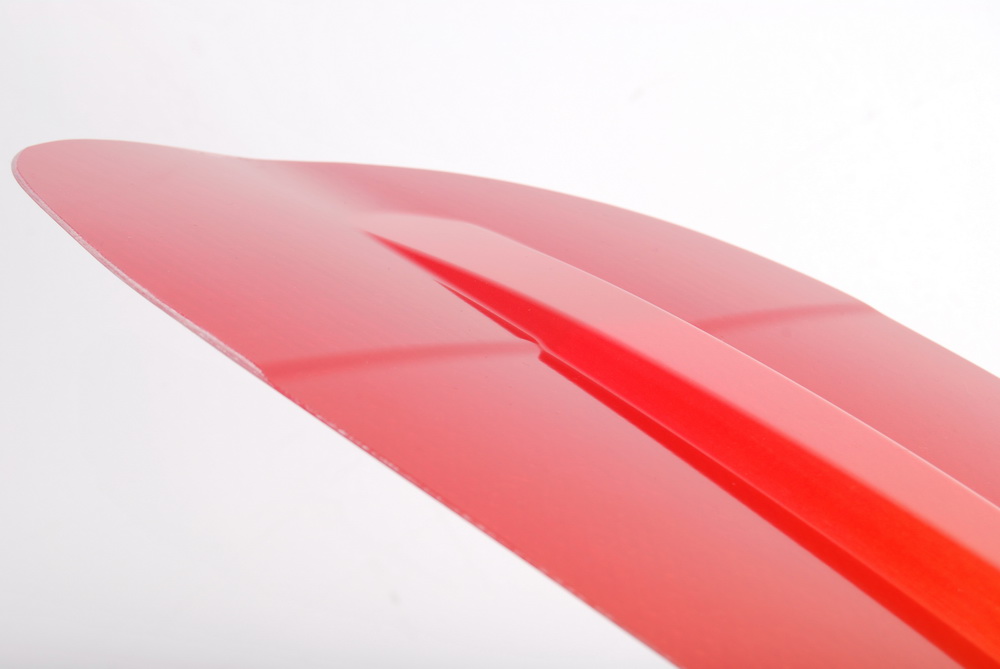
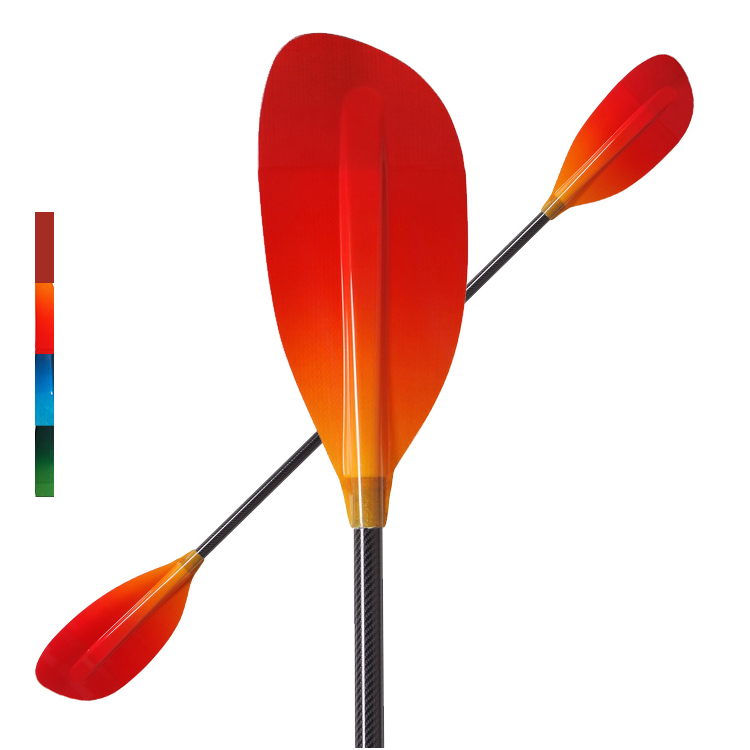
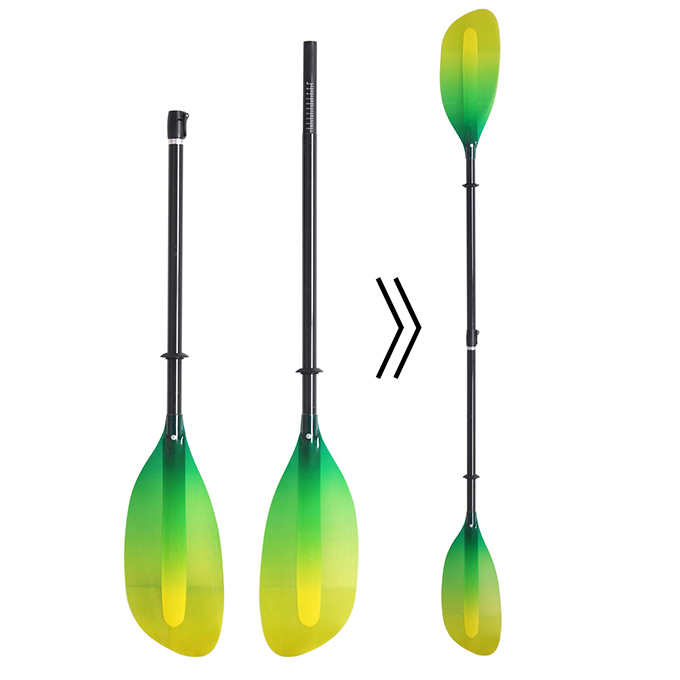
If you are interested in our products and want to know more details,please leave a message here,we will get in touch with you as soon as possible!
How to Select the Best Detachable Kayak Oar: A Complete Guide
When it comes to kayaking, choosing the right equipment can make all the difference in your experience on the water. One of the most important pieces of gear is the kayak oar. While most kayaks come with a standard oar, many paddlers opt for a detachable kayak oar for its convenience and versatility. Whether you’re a seasoned kayaker or a beginner, understanding how to select the best detachable kayak oar for your needs is crucial for a smooth and enjoyable outing.
In this guide, we’ll dive deep into everything you need to know about selecting the right detachable kayak oar, covering everything from materials and length to blade design and ergonomics. By the end of this article, you’ll have all the knowledge you need to make an informed decision.
Why Choose a Detachable Kayak Oar?
Before we jump into the selection process, it’s important to understand the advantages of using a detachable kayak oar. Here are some key benefits:
- Portability: The primary reason many kayakers prefer a detachable oar is the ease of transport. Instead of dealing with a large, unwieldy one-piece oar, you can easily break it down into two or more sections for compact storage in your car or kayak.
- Adjustable Length: Detachable kayak oars often feature adjustable lengths, which means you can customize the oar to fit your height, paddling style, and type of kayak. This flexibility helps in achieving better control and efficiency on the water.
- Easy Maintenance and Replacement: If a part of your detachable oar becomes damaged, you don’t have to replace the entire oar. You can simply replace the damaged section, saving you money in the long run.
- Versatility: Many detachable oars can be converted into paddles for other watercraft, like canoes or stand-up paddleboards, making them more versatile than traditional one-piece oars.
Now that we’ve established why a detachable kayak oar is a great choice, let’s look at the factors you need to consider when selecting the right one for your kayaking adventures.
1. Material
The material of your detachable kayak oar plays a huge role in its performance, durability, and weight. Here are the most common materials used:
- Aluminum: Aluminum oars are lightweight, durable, and generally more affordable than other materials. However, they can be prone to bending or denting if subjected to heavy impact. They’re a good choice for recreational kayakers looking for a budget-friendly option.
- Fiberglass: Fiberglass oars are known for their strength and lightness. They provide a smoother, more efficient paddling experience compared to aluminum, as they tend to be more flexible and less tiring over long distances. They are a popular choice among intermediate to advanced kayakers, but they are more expensive.
- Carbon Fiber: Carbon fiber oars are the lightest and most durable option available. They are stiff, efficient, and offer maximum performance. The downside is their high price point, which might not be necessary for casual kayakers. However, for those who kayak frequently or in challenging conditions, a carbon fiber detachable kayak oar is an excellent choice.
- Plastic: Some budget-friendly oars are made from plastic, typically designed for beginners. These oars are durable but may not offer the best performance or longevity compared to aluminum, fiberglass, or carbon fiber.
2. Oar Length
Selecting the right length for your detachable kayak oar is crucial for efficient paddling. The length of your oar affects your stroke, comfort, and overall performance on the water. Here are the factors to consider when choosing the ideal length:
- Kayak Width: Wider kayaks require longer oars to reach the water comfortably, while narrower kayaks can use shorter oars.
- Paddler’s Height: A taller kayaker will generally require a longer oar, while a shorter paddler will benefit from a shorter oar. A common guideline is to choose an oar that’s 6 to 10 inches longer than your height for optimal performance.
- Paddling Style: If you’re a high-angle paddler (more vertical strokes), you may prefer a slightly shorter oar. If you’re a low-angle paddler (more horizontal strokes), a longer oar will give you more leverage and efficiency.
Many detachable kayak oars come with adjustable lengths, which can be useful if you share your kayak with others or if you want to fine-tune your setup for different conditions.
3. Blade Design
The design of the oar blade significantly influences your kayaking performance, especially when it comes to maneuverability and speed. Here’s what to look for in a detachable kayak oar blade:
- Blade Shape: There are two common types of blade shapes:
- Flat-bladed Oars: These oars offer better control and stability, making them ideal for touring and general kayaking.
- Spoon-shaped Oars: These blades are designed for more efficient strokes and can help generate more power, making them ideal for high-speed kayaking or racing.
- Blade Size: Larger blades provide more power with each stroke but require more energy, making them suitable for experienced kayakers. Smaller blades are easier to handle and require less effort, making them better for beginners or relaxed paddling.
- Blade Material: The material of the blade also affects its performance. Fiberglass and carbon fiber blades are lightweight and provide a smooth, efficient stroke. Plastic blades are less expensive but can be more prone to wear and tear.
4. Handle Design For Detachable kayak oar
Comfort and grip are essential when it comes to choosing a detachable kayak oar. The handle is where you’ll be spending most of your time, so it’s important to choose one that feels comfortable and secure.
- Ergonomics: Look for an oar with a comfortable, ergonomic handle that reduces strain on your hands and wrists. Some handles are designed with grooves or padding for added comfort.
- Grip Material: Handles are usually made from materials like rubber, foam, or plastic. Rubber and foam grips are more comfortable for long trips, as they provide cushioning. Plastic handles are durable but might be less comfortable over extended use.
- Two-Piece vs. Four-Piece Oars: Most detachable oars come in two or four pieces. Two-piece oars offer faster assembly and are typically more rigid, providing a better paddling experience. Four-piece oars, on the other hand, are more compact for storage but may have more flexibility, which can affect performance.
5. Oar Weight
The weight of the detachable kayak oar affects how easily you can paddle. Lighter oars reduce fatigue and improve the efficiency of each stroke, but they tend to be more expensive. Heavy oars, while less costly, may tire you out quickly on longer paddles.
As a general rule:
- Lightweight oars are ideal for those who plan to kayak for long periods or those seeking maximum performance.
- Heavier oars might be fine for casual, short trips where weight is less of an issue.
6. Price and Durability
Price is always a consideration when selecting a detachable kayak oar, and you’ll generally get what you pay for. While there are budget-friendly options, the durability and performance of lower-cost oars may not match that of more expensive models. Higher-end oars made from fiberglass or carbon fiber tend to last longer, resist wear, and provide a more enjoyable paddling experience.
7. Storage and Transport
Since the primary appeal of a detachable kayak oar is its portability, make sure the model you choose is easy to assemble and disassemble. Some oars come with carrying bags or straps, making them even easier to transport. Look for oars that break down into compact sections that fit comfortably in your kayak or car.
Final Thoughts Detachable kayak oar
Selecting the right detachable kayak oar comes down to balancing performance, comfort, and convenience. Whether you’re looking for lightweight carbon fiber oars for high-performance kayaking or affordable aluminum options for casual paddling, the right oar can significantly enhance your time on the water.
Remember to consider your kayaking style, the type of water you’ll be paddling on, and your own preferences when making your choice. With this guide, you should be well-equipped to find the best detachable kayak oar for your needs, ensuring many enjoyable hours on the water!
Happy paddling!


